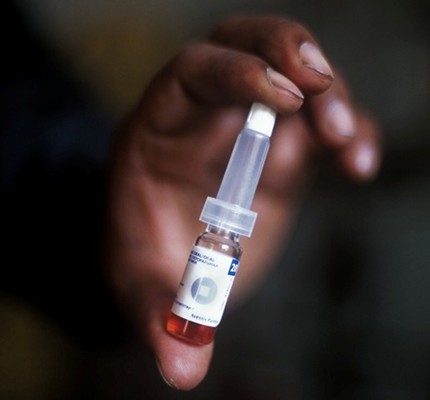World ready for OPV2 cessation
...but what does it actually mean?

At its October 2014 meeting, the Strategic Advisory Group of Experts on immunization (SAGE) – the independent body advising the World Health Organization (WHO) on immunization – concluded that preparations for oral polio vaccine type 2 (OPV2) withdrawal in early 2016 are on track. This conclusion is critical in achieving objective 2 of the Polio Eradication & Endgame Strategic Plan 2013-2018. With wild poliovirus type 2 already eradicated since 1999, the aim is to remove the risk of new circulating vaccine-derived poliovirus type 2 (cVDPV2) from emerging, by switching from trivalent OPV (containing type 1, 2 and 3 serotypes) to bivalent OPV (containing only type 1 and 3 serotypes) in routine immunization programmes. Over 90% of cVDPV cases are due to the type 2 component contained in trivalent OPV.
But what does it all actually mean?
Well, from an operational point of view, it means impressive logistical accomplishments must be achieved in record time, both at the global, regional and country level.
The polio world is involved in plans to introduce inactivated polio vaccine (IPV) into the routine systems of 119 countries that currently use only OPV by end-2015, one of the largest globally-coordinated vaccine introduction projects in history. But over and beyond this ambitious vaccine introduction project, additional equally-impressive feats need to be implemented to make the trivalent OPV to bivalent OPV switch a success.
All countries will need to switch the vaccines in their routine immunization programmes in April 2016 (the current target date for the switch). During a two-week switch period, each country will elect a National Switch Day. Such global coordination is necessary to minimise the risk of one country continuing to use trivalent OPV and inadvertently re-infecting another country no longer using the vaccine with cVDPV2.
The GPEI is working with countries, regions, partners and manufacturers to ensure vaccine supply for both vaccines is adequately managed, to reduce the number of doses of trivalent OPV stock that will remain to be withdrawn. Regular stock takes of trivalent OPV will begin in 2015 to calculate accurate supply needs of this vaccine through to the switch date, and orders and shipments adjusted accordingly. The aim is to ensure sufficient trivalent OPV stock is available until the very last day, while minimising the stock that is left to be withdrawn subsequently. Countries will need to pre-identify service points to collect the stock and ensure proper disposal. A one-week buffer supply will be calculated and maintained, to ensure no child remains unimmunized inadvertently during the switch window. Manufacturers will stop producing trivalent OPV.
Ahead of this time, the financing and supply of bivalent OPV must be secured by close coordination with manufacturers from around the world.
This switch has potential implications on cold-chain capacity for the vaccines. Although bivalent OPV will have similar cold-chain volume requirements as trivalent OPV, it will not be identical and so countries will ensure that requirements are adequately re-calculated and re-furbished as needed. Health workers from the public and private sector must be trained and communities sensitised to the importance of vaccinating children with the correct vaccine. Even healthcare stationary needs to be re-printed, such as re-labelling trivalent OPV with bivalent OPV on vaccination cards, stock records and tally sheets. Parents and communities at large will be sensitized to the benefits of the new vaccine.
Finally, a global stockpile of 500 million doses of monovalent OPV type 2 (mOPV2) is being secured be secured and maintained, and global consensus on its use and management reached should type 2 poliovirus re-emerge anywhere in the world. Because the last thing the world needs is for some countries to start using this vaccine unless absolutely needed, thereby raising the spectre of further type 2 vaccine-derived polioviruses from emerging.
The operational guidelines for the global switch are expected to be endorsed by Member States at next year’s World Health Assembly. But already, countries are preparing in full force for April 2016. It is yet another example of the global commitment behind the worldwide drive to secure a lasting polio-free world.













